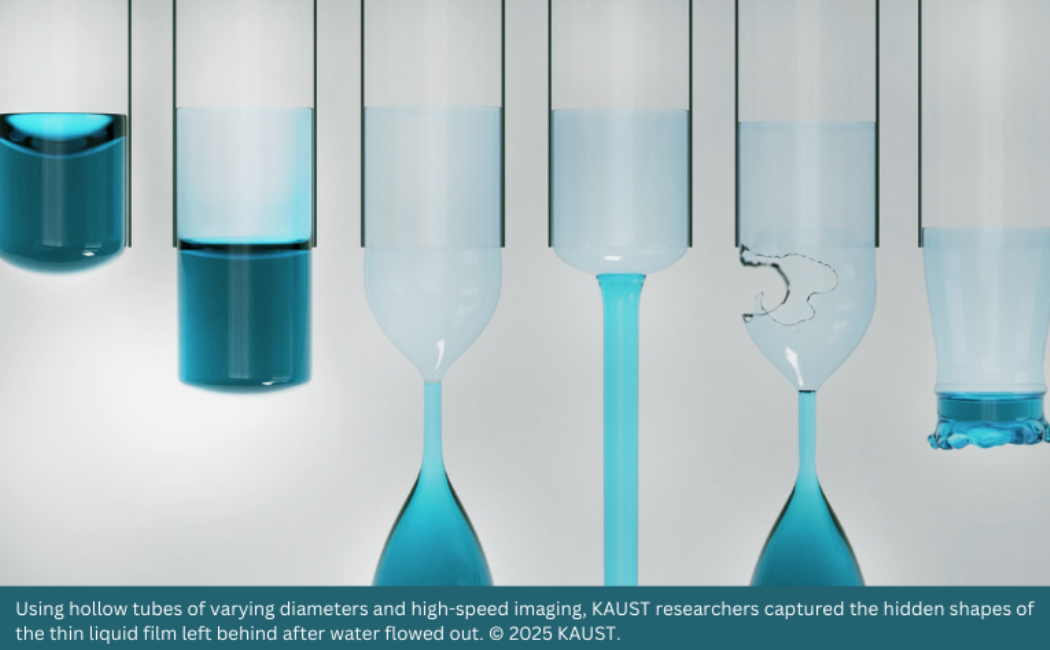


07 August, 2025
When water drains from the bottom of a vertical tube, it is followed by a thin film of liquid that can adopt complex and beautiful shapes. KAUST researchers have now studied exactly how these “fluted films” form and break up, developing a mathematical model of their behavior that could help improve the performance, safety, and efficiency of industrial processes.
“At first glance, water draining from a tube seems like an everyday process driven by gravity,” says Abhijit Kushwaha, a member of the team behind the work. “It is only with high-speed imaging that we can slow down time enough to capture the hidden choreography of this process.”
This revealed a curious effect for certain combinations of tube diameter and water height. As the liquid fell, a thin film of water dragged against the tube walls and descended more slowly. Once the main water column exited the tube, this film emerged and formed a fleeting, tulip-shaped bubble. In some cases, the fluted film quickly retracted into the tube; in others, it stretched until the water column broke away from it.
The researchers created a mathematical model to predict the behavior of these films based on a few simple parameters, such as tube radius and water height. “This can inform better design and control strategies in any system where thin liquid films play a vital role — from industrial reactors to microelectronics to biological systems, such as the lungs,” explains Tadd Truscott, who leads the research.
Read more at KAUST Discovery.